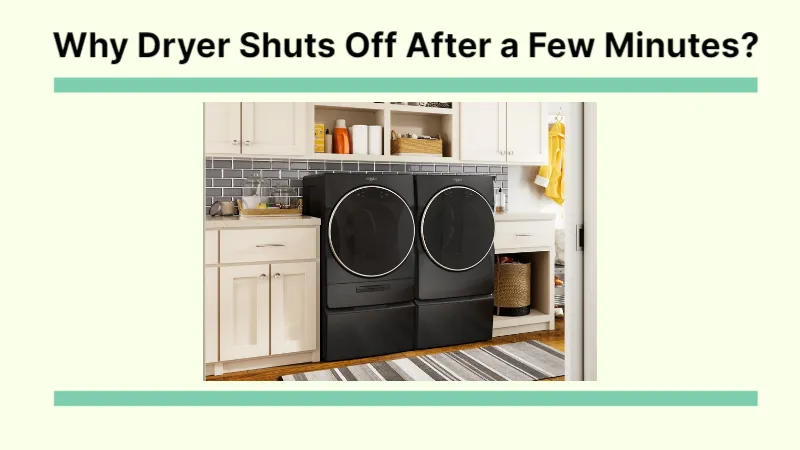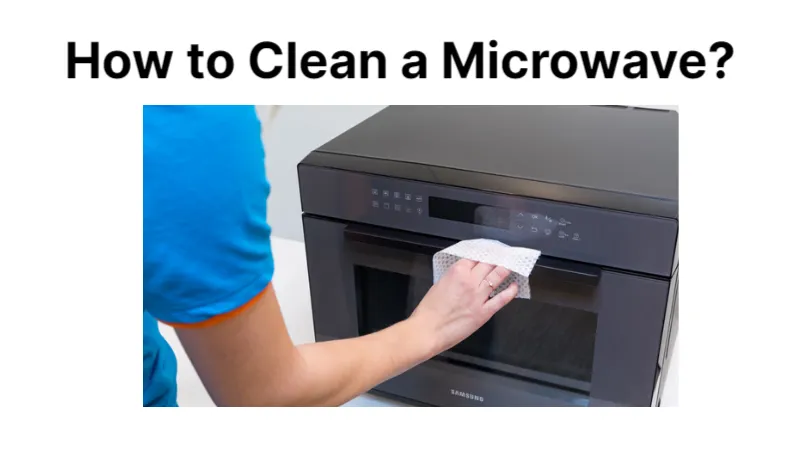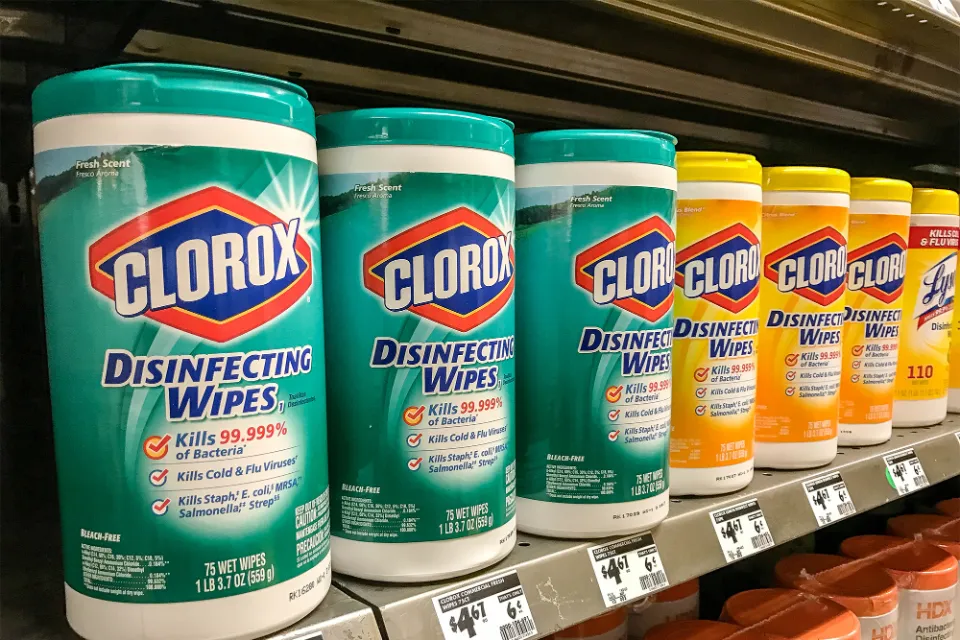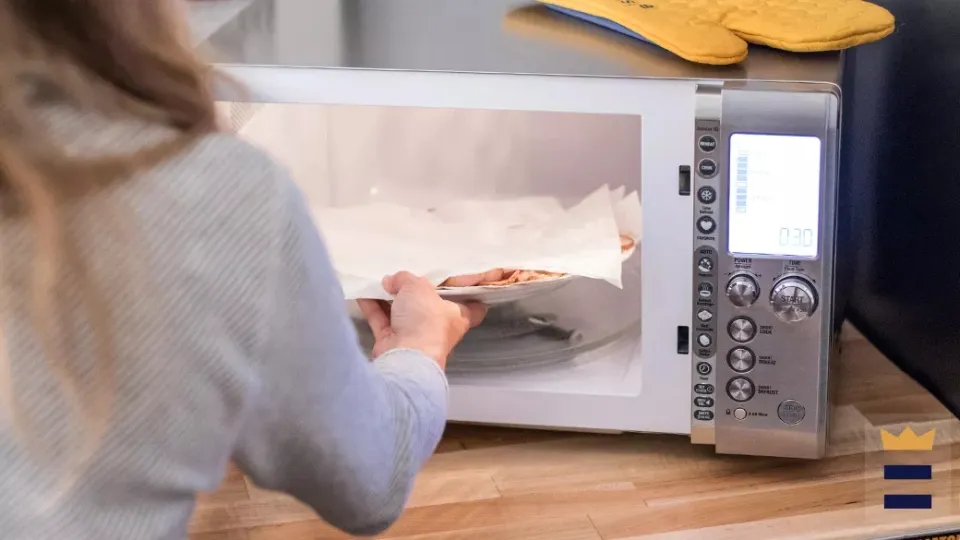You’re in the right place if you’ve loaded a load of laundry into your dryer and turned it on, but a few minutes later it stops working. So, why dryer shuts off after a few minutes?
There are six primary causes for this. Each of them will be covered in this article, along with suggestions for how to prevent problems from occurring.
Why Dryer Shuts Off After a Few Minutes?
Just begin with reason 1 and proceed down the list from there.
Overheating Dryer Motor
An overheating dryer motor is the primary cause of a dryer shutting off after a while. If this happens, you might need to replace it, particularly if the motor is making a loud buzzing noise.
Here’s how to check if the motor is overheating and needs to be replaced:
- Put the dryer on a cycle to get started. When it shuts off, wait a few minutes, then see if the dryer restarts. If it does, the motor is likely overheating. Move on to reason number 2 if it doesn’t restart.
- Make sure the lint trap isn’t full or the dryer isn’t overloaded with too many clothes before replacing the motor. You will need to replace the motor if neither of those two factors is the root of the problem.
- Turning off the dryer’s power is the first step in replacing the motor.
- Your dryer’s lower access panel should be removed and set aside.
- The dryer’s lint filter should be located and taken out. The lint filter should have been underneath, and now you should be able to see a few screws. Find the two screws, then take them out.
- You must take out the screws holding the top panel in place on the dryer in order to remove it. The door switch wire harnesses must be disconnected prior to fully removing the panel.
- Find the drive belt, take it out of the idler pulley, and then remove the idler pulley from the mounting bracket.
- Lift the dryer drum from the dryer cabinet and place it somewhere out of the way.
- After locating the motor and removing the wires that were connected to it, loosen the blower wheel.
- Now that the old motor has been removed, you should be able to attach the new motor in its place.
- Reassemble your dryer by reconnecting the wires to the motor, tightening the blower wheel, and then replacing the dryer drum.
- Turn on your dryer once it’s put back together to see if the issue has been resolved. If not, proceed to factor number 2.
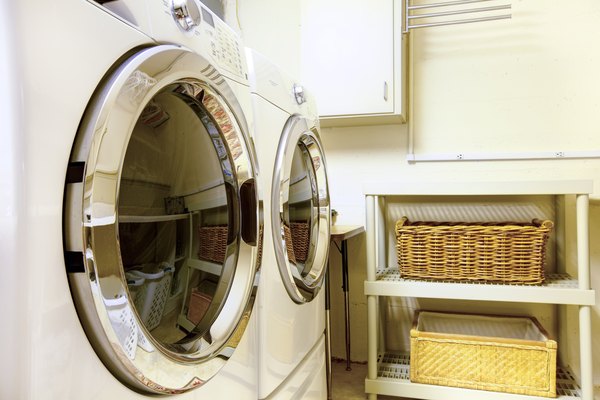
Faulty Door Latch
When your dryer is operating, the door latch makes sure it is securely closed. It needs to be changed if it develops defects as a result of excessive use. Closing your dryer door and ensuring that it is securely shut will allow you to check the door latch. Otherwise, a new door latch will have to be installed. You can skip to reason number 4 below if the door latch is operating properly.
To replace the door latch:
- Turn off the circuit breaker or unplug the dryer from the outlet.
- Remove the door hinges after turning off the power; you’ll need to unscrew the bolts holding them in place.
- In order to remove the door latch, take the door off and disassemble it.
- After removing the door latch, reassemble the door by setting the replacement door latch in the proper location.
- Screw the hinge screws back in after reinstalling the dryer door.
- Turn on the electricity and see if the dryer now operates continuously for a few minutes. If not, proceed to the next justification.
Issues With the Moisture Sensor Wires
In addition, dryers have a device known as a moisture sensor that measures the amount of moisture still present in the drum.
When this part fails it will cause the machine to lose signal from the sensor to the control board and the dryer will stop within 5 minutes of operation, “thinking” that clothes already dry.
Your clothes will still be wet even though the machine will indicate that the cycle is finished.
Here’s how to locate and repair this part:
- Disconnect the power
- Pull the dryer away from the wall, so you can access the back of it
- Remove the screws that hold the top on
- Pull the top back about an inch, lift to remove, and set aside
- Remove the wiring harness from the control board
- Remove the screws that hold the control panel in place
- Pull the control panel out, remove the last wiring harness, and lay the panel on top of the dryer
- Open the dryer door and remove the screws that hold the lint screen housing onto the front panel
- Close the door
- Use pliers to bend the locking tab that holds the front panel on
- The screws holding the front panel on should be removed. Make sure to hold the panel when taking out the last screw
- Unplug the wiring harness for the door switch and remove the front panel, set aside
- The wiring harness for the moisture sensor should now be visible on the right. Reach in and unplug
- Take out the mounting plate with pliers
- Pull the lint screen out and set aside
- Remove the screws holding the grill in place, remove the part and set aside
- Pull the lint filter guide out
- Remove the wiring harness from the moisture sensor
- Install the new wiring harness and move backward through the steps to reassemble your machine
Broken Drum Belt
If your dryer stops after only a few minutes, and will not restart the first thing you should check is the drum belt.
The motor pulley, idler pulley, and drum are all wrapped in this belt. Your clothes will tumble as the dryer drum rotates as the motor’s armature spins.
Your belt is clearly broken if you can hear the motor running but the drum not spinning.
The belt can break due to normal use over time, and until the part is replaced, the dryer will not function again.
Here’s how to change a broken drum belt:
- Disconnect the power
- Remove the top panel from your dryer and lean it back against the wall for support
- Remove the screws that hold the front panel of the dryer in place
- Support the front panel against the side of the cabinet
- Release the belt from the idler pulley
- Release the belt from the motor pulley
- Grasp the belt firmly and pull up with it to release the drum bearing
- Remove the front guide
- Slide the drum forward through the opening enough to get the belt off the back of the drum
- Install the new belt
- Drape it around the drum with the groove side against the drum
- Take care not to get the belt into the grease on the rear of the drum shaft
- Slide the drum back
- Lift it up and locate the tumbler shaft into the rear bearing
- Line the belt up
- Reach in and run the belt through the idler pulley and motor pulley
- Release the tension on the idler to snug the belt up
- Move backward to reassemble your machine
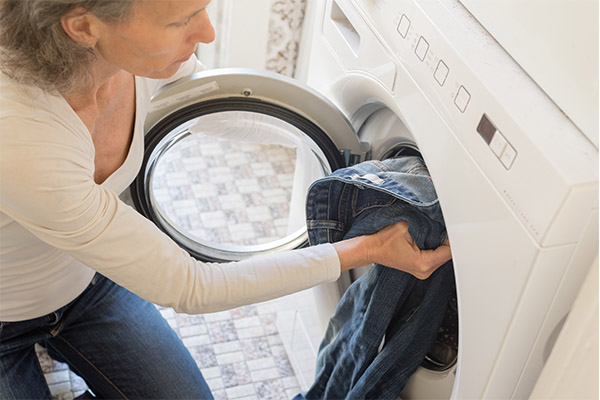
The Dryer Vent is Blocked
During operation, dryers frequently produce a lot of hot air. The thermal overload switch may turn on in an effort to prevent a potential fire hazard when that hot air has nowhere to go because of a blocked vent tube. In other words, your dryer might stop operating after a while.
As a general rule, you can take a look at your dryer vent to see if it’s clogged up with lint and even give it a good cleaning. Here’s how to do it:
- Remove the dryer duct and unplug your dryer.
- Find the exterior vent outside your home, then take the cover off.
- Suck up any lint in and around the interior and exterior duct hole using the hose attachment of a Shop-Vac or your household vacuum cleaner.
- Put a dryer brush on a power drill and use a vent cleaning kit to push it into the ductwork.Push the brush as far into the ducting as you can, then slowly start the drill to spin it.
- Lint and debris should be removed with a brush.
- Check to see if the dryer now functions after reconnecting it. If not, move on to the following potential issue.
Broken Idler Pulley
If your dryer stops working after only five minutes of use and won’t restart, but the belt isn’t damaged, you most likely have a broken idler pulley.
The machine should be disassembled using the same procedures as above until the idler pulley is found. Now carefully examine it to check for any damage.
Replace it if there are any obvious damages or if it loses the required tension. The dryer should function normally once this component has been replaced.
Have you ever had a dryer that kept turning off after a short period of time? Have you run into a problem that we didn’t cover? If so, kindly leave a comment below; we’d love to know what you think.
Will a Dryer Stop Heating If the Vent is Clogged?
The most frequent cause of a dryer not heating up is a clogged vent. After using your dryer, if you notice that your clothes aren’t completely dry, check the vent for lint, dust, or other debris that might be clogging it and causing it to malfunction.
All the lint and other debris from your clothes can add up with each additional load of laundry. The amount of air that can pass through the vent hose is reduced as lint is added to the exhaust vent with each cycle that your dryer completes. Not all of the lint and debris from your laundry will be caught by the lint trap, but it will help.
The smaller amounts of lint that are continually being added to your vent will eventually clog it to the point where air cannot escape, and you may be faced with a potentially dangerous situation. One of the top causes of house fires caused by dryers is due to a clogged dryer vent.
Prior to pursuing other, more expensive options that may require repairs and replacement parts if your dryer has stopped heating, make sure the dryer vent is clear.
Here’s what you’ll need to do to get your dryer vent cleared to make your dryer safe and efficient:
- You should yourself the dryer vent. If you want to save money and the time it’ll take to schedule an appointment for a vent cleaning service, you can DIY a dryer vent cleaning. Make sure the dryer hose is separated from the vent before using a vacuum to remove the lint and debris. For easy access, it is best to use a hose attachment on your vacuum.
- To have your dryer vent cleaned, use a service.You can also hire a dryer vent cleaning service to come out and take care of your clogged vent for you if you don’t trust yourself to complete the task. If you perform a quick internet search for dryer vent cleaning in your region, you can find these businesses almost anywhere.
Read about How to Reset Samsung Dryer?
Last But Not Least
We sincerely hope that one of the aforementioned solutions will work for you, and that you will no longer have to deal with a dryer that turns off after a short period of use.
If it didn’t, though, you should speak with a specialist to determine the true nature of the issue.
Thank you for visiting and please check out some of our other useful DIY articles!
